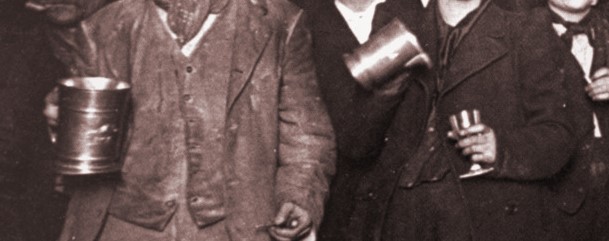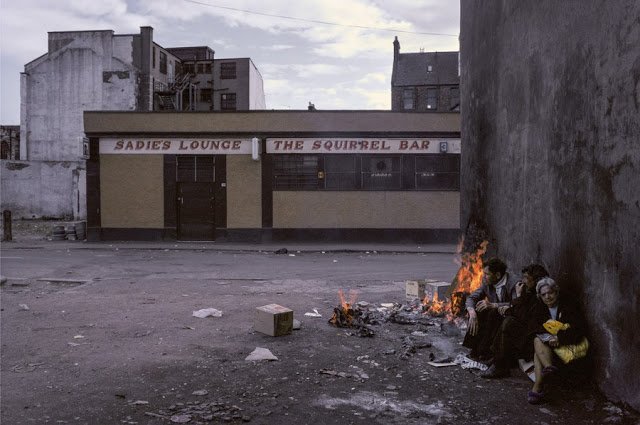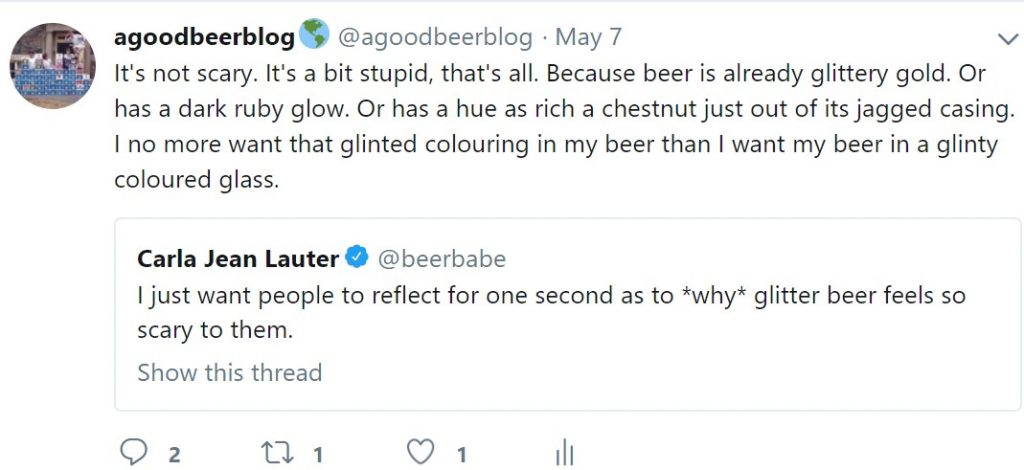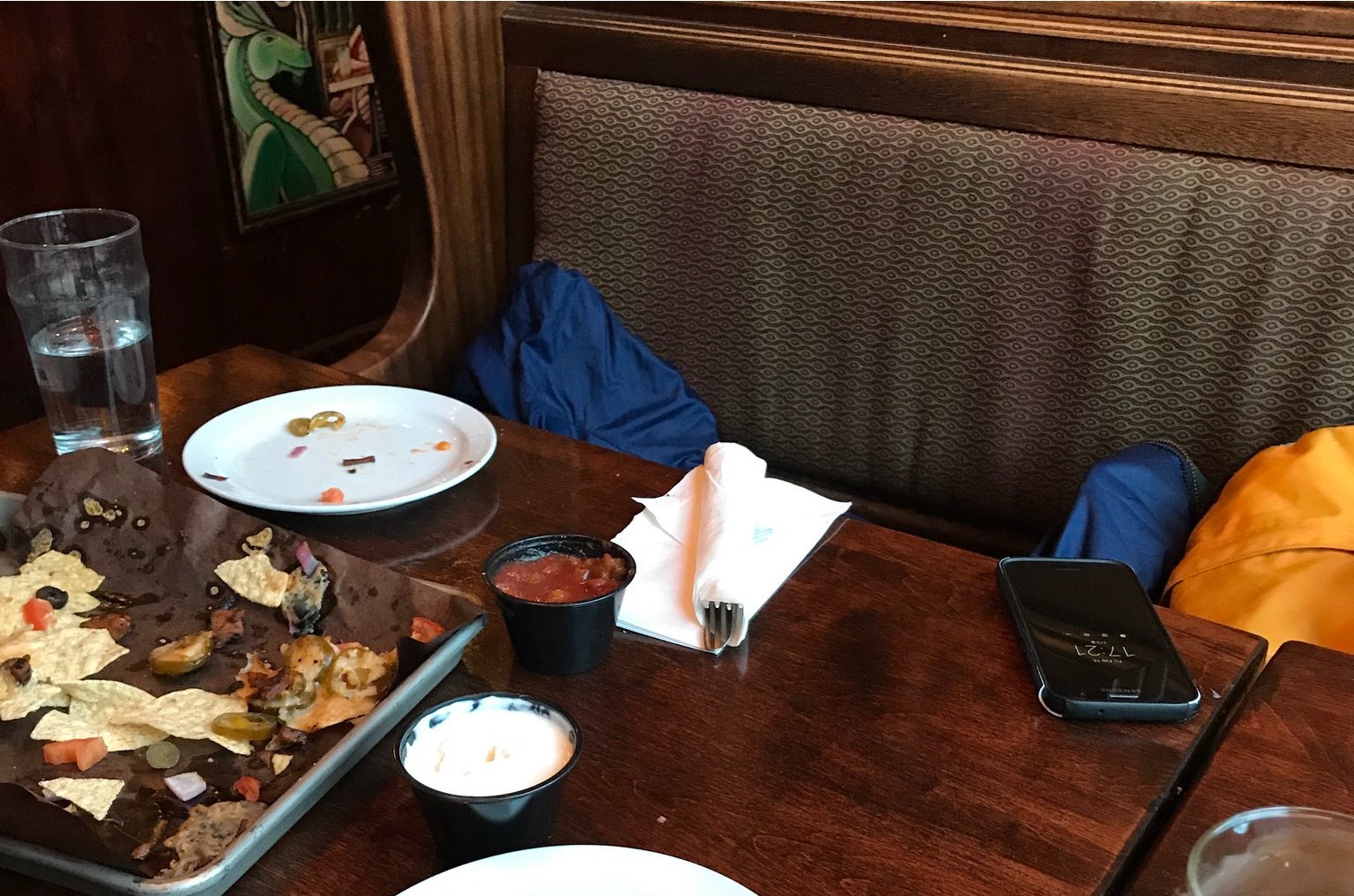Wow. We are here finally. Just a few weeks ago we got our first campaign photo of a leadership candidate pouring a beer. The best thing is there is a chance that someone who got the second most votes to become the leader of his party will go on to lead that party to the second most votes to lead that party to election victory to become Premier of Ontario* for the next four years. See how nice and accommodating we Canadians are?** Actually, just with a good night in a pub, it is all about seat distribution. All so excellent. I trust by this time next week I am not an involuntary freelancer as a result.
Midday Update: I must have lost my marbles during the hazy dilerium brought on by that anthem to the province as I have forgotten to mention not only that you will need to check out Boak and Bailey’s pépites des actualités on Saturday but also failed to recognize Stan’s (i) return to the Northern Hemisphere but also (ii) his return to the Monday beer news correspondent’s desk.
Such confusing times. Confusion is all about the news these days. Did you know that in New Brunswick Moose Drool beer has to be called Moo Drool beer? Did you know, as my fellow Esq. reports, that the Oakland Athletics are legally objecting to a craft brewer of sorts for misuse of the word “athletic”? My main issue in the latter one is how you cannot have no-alcohol craft beer. It’s an impossibility to impose that technique and remain true to anything resembling a traditional process. Much more ominously, a careful eye has noted that a craft brewer in England has adopted reasonably identifiable fascist imagery and name branding. Denials ensued – but how thick are folk?
In a more tangled pit of legalese, we learn of this story coming out of a court process in North Carolina:
A lawsuit brought by Charlotte’s largest craft brewers has uncovered illegal activity amid efforts to overturn North Carolina’s self-distribution laws, according to an attorney representing them. Initial discovery exposed a “secret agreement” between Anheuser-Busch and distributor R.A. Jeffreys that gives sales of those beers priority over all other products — illegal under a 1989 state law, says Drew Erteschik, co-counsel for The Olde Mecklenburg Brewery, NoDa Brewing Co. and the Craft Freedom initiative.
I love secret deals in that you often find if you do a little research they were actually reasonably discoverable at the time… BUT THE POINT STAYS THE SAME NOW!!! Secret anti-craft factions lining up against us all. How will craft survive… err, maintain its place… err, resist massive continuing expansion?
Sad wine news from Nova Scotia as frost in June hammers the grape crop.
Speaking of craft expansion, Evil Twin Brewing has called out the hidden shadowy practice of private equity’s grasp upon the ankles of craft beer, including this in lamentation to a voice speaking for the cause of money – a dirge to what is and what should never be. Oddly, this is all raised in response to the expansion of the Mikkeller corporate empire. Being owned by, I now assume, more evil twin.
Note: extremely interesting connection drawn by one US craft brewer between the discussion above, the underlying state of affairs and its refusal to participate in the central authority hugging “IndePendeNt” seal*** issued by the Brewers Association.
This tweet reminded me that it is good to remember that, while Canada may be relatively young, Ontario retains a number of Georgian taverns like the 1830s Black Bull Tavern of Queen Street in Toronto.
“Tank Stella“? Please tell me that is code for something.
Jeff pointed out something very interesting when he discussed whatever something called “rosé beer” is:
No. Rosé is just a name applied to preexisting beers to move product. Hibiscus goses? The first of those appeared nearly a decade ago. This is not a new style, it’s just a way to make people there’s something new here.
It relates to a point The Beer Nut made over here in relation to east coast IPA. The death of style being accompanied by confusion as to the continuing lingering existence of what was formerly perceived as, you know, a style. I have never understood “east coast IPA” since people stopped praising east coast IPA circa 2007. Harpoon IPA is the model. Malty and less hoppy and perhaps still available at Fenway… or wherever else no one cares about your Cicerone server badge. Rosé beer? Quebec’s Rosée D’Hibiscus has had reviews posted on BeerADvocate since at least 2007 including this linguistic wizardry:
It’s pink, an orange pink colour with a finger of foamy pink head. Pinkest beer I’ve had. Some lacing as the beer goes down.
Sounds pretty damn rosé to me. Which, for me, illustrates a key element of craft beer boostering today – amnesia. Or a profound dedication to not researching anything. Can’t be an expert without a strategy to adopt unknowing. “Waters of Lethe” might actually be a good name for a Midlothian beer bar, come to think of it.
Bizarre: if this is the weaving of “the science of craft beer into story telling like no other” then isn’t all pretty much lost? Nice puff piece, maybe, on the use of ingredients to add fruit flavours. Maybe.
HardKnott Dave doesn’t have amnesia. And he seems to be equipped with an honesty attachment as well. His piece on the role of moolah and line placements in UK pubs is fabulously clear:
They contacted me a couple of months ago as they were negotiating with suppliers of their major brand lager. It seems that they were being offered a cash lump sum for a two year exclusivity deal. They were being offered £2k cash to kick our Intergalactic Space Hopper off the bar. Apparently it isn’t just one major beer producer that is doing this, it is most of the big multinational brands and is looking a little bit like a cartel and anti-competitive action.
Preach! Too bad 99.9999% of people in the know are not sharing. Reasonable to assume anyone downplaying this is on the take one way or another themselves.
By the way, this post marks the 3000th post in the upgraded version of A Good Beer Blog launched in October 2016. If you ever want to glory in the original 2003-2016 site and the 1,500 or so extra posts over there that I never quite got brought over here it is sitting there at the Wayback Machine just waiting for you. I do love that old school tab with the 2004ish beery emoticon. Mucho mucho gracias for all the clicks over all the years!
*This oddly spaghetti western themed tune was rolled out to us when I was in kindergarten in 1968, we sitting lined up neatly, a couple hundred souls cross-legged on the gym floor getting our dose of political propaganda.
**Well, most Canadians…
***whatever… ;D












